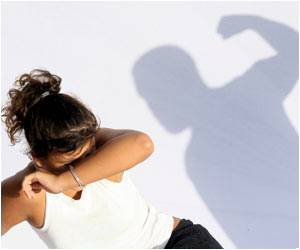Kids with multiple psychosomatic symptoms like regular aches, pains, sleep and appetite problems are likely to be suffering from physical abuse, says research.

The association was highest in children who were physically abused and also witnessed intimate partner violence (IPV). However, there was no significant association between IPV on its own and multiple symptoms.
"The children were asked if they had experienced any of the following symptoms at least twice in the last month: stomach ache, headache, sleeplessness, dizziness, back pain and loss of appetite" explains study co-author Professor Staffan Janson from the Division of Public Health Sciences at Karlstad University, Sweden.
"They were also asked about 13 common chronic conditions, bullying and school performance, to eliminate any other factors that could cause the symptoms, and about whether they had been physically abused and witnessed IPV at home."
The study sample was equally split between girls and boys, with approximately one third of the sample coming from each of the three age groups.
Most of the children were born in Sweden (89 percent) and living with both biological parents (74 percent). Just under half (42 percent) had at least one chronic condition, 10percent had two chronic conditions and 4percent had three or more.
Advertisement
Advertisement
The most common symptoms were headache (38 percent), sleeplessness (36percent) and stomach ache (31 percent).
86 percent of the children who reported that they were physically abused and had witnessed IPV at home reported at least one psychosomatic symptom, with 41 percent reporting three or more, compared with 17percent of the non-abused children.
82 percent of the children who reported physical abuse only reported at least one symptom, with 35 percent reporting three or more symptoms compared with 17 percent of the non-abused children.
There was no significant difference in the symptoms reported by children who did or did not report just IPV.
When confounding factors, such as chronic conditions, bullying and school performance were taken into account, the odds of a child suffering physical abuse, with or without IPV, was 112 percent higher (OR 2.12) than a child who was not being abused. When IPV was added into the equation, this rose to 171 percent higher (OR 2.71)
The odds for a child suffering physical abuse only was 72 percent higher (OR 1.72) and the odds for IPV only was 9 percent higher (OR 1.09).
Abused children with chronic conditions reported significantly more psychosomatic symptoms than abused children without chronic conditions.
"Our study demonstrates a clear association between high levels of psychosomatic symptoms and an increased risk of physical abuse" said Professor Janson.
"The association was even stronger in abused children who also witnessed intimate partner violence at home," Professor Janson added.
The study has been published in Acta Paediatrica.
Source-ANI











